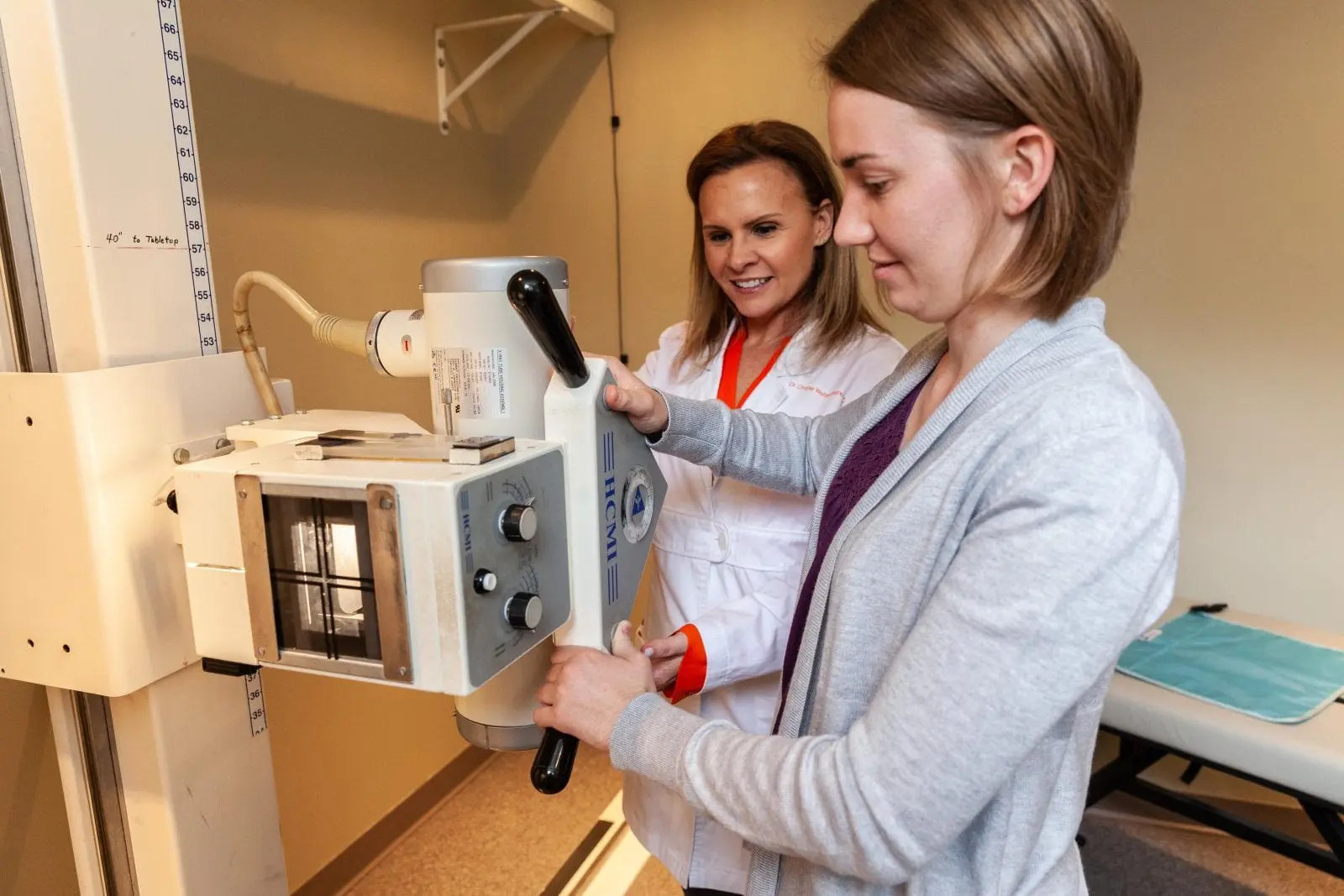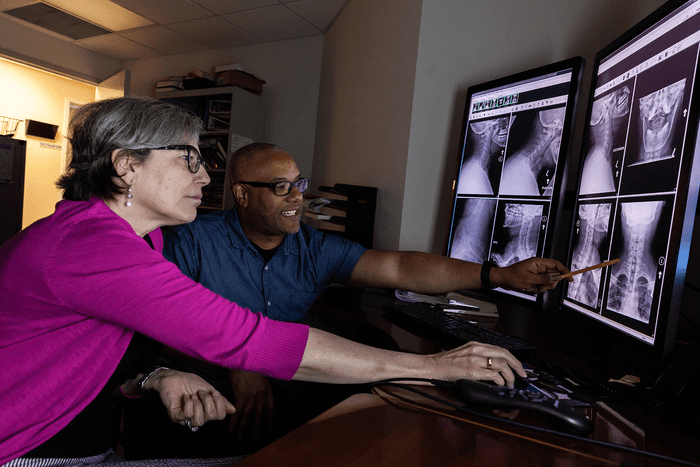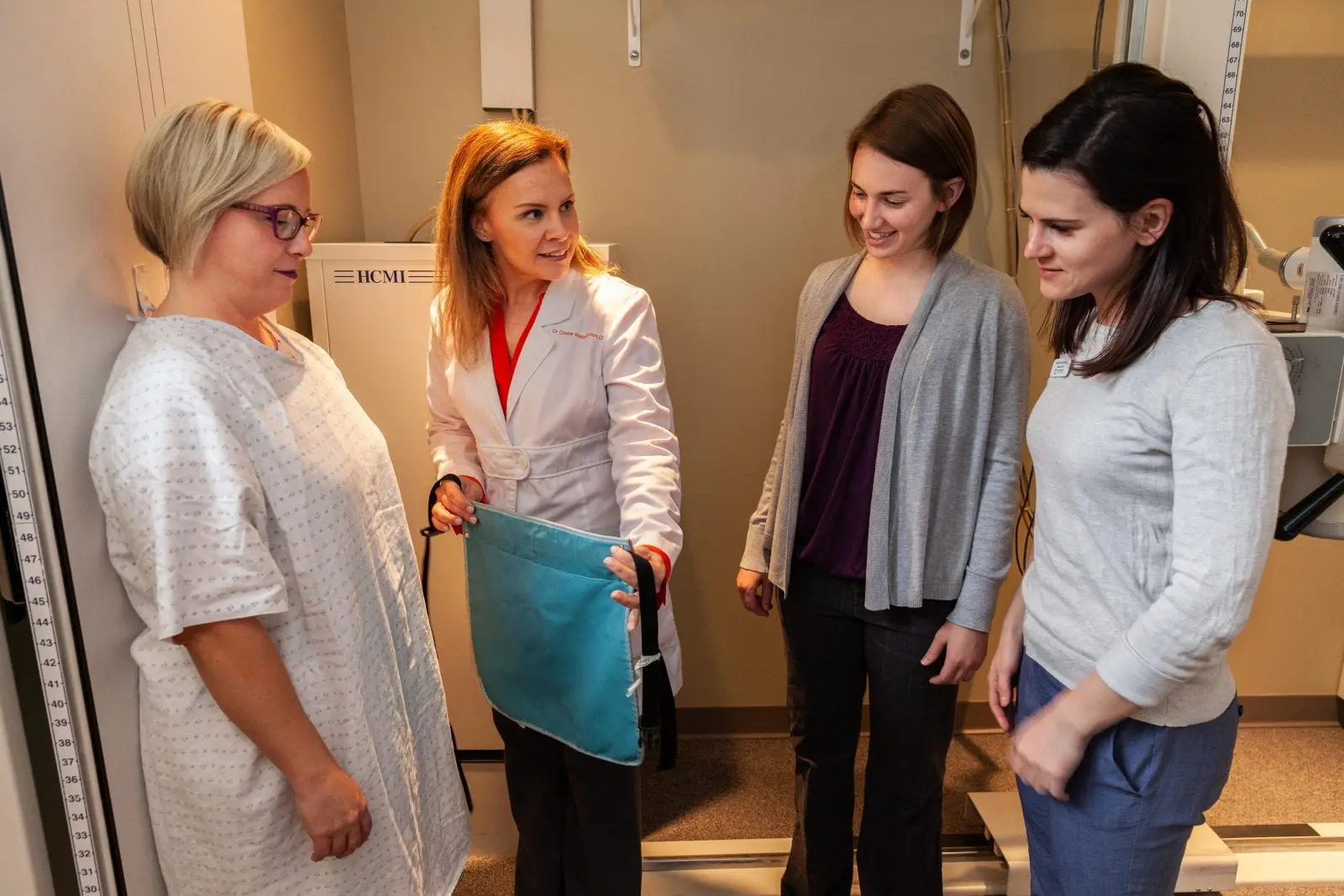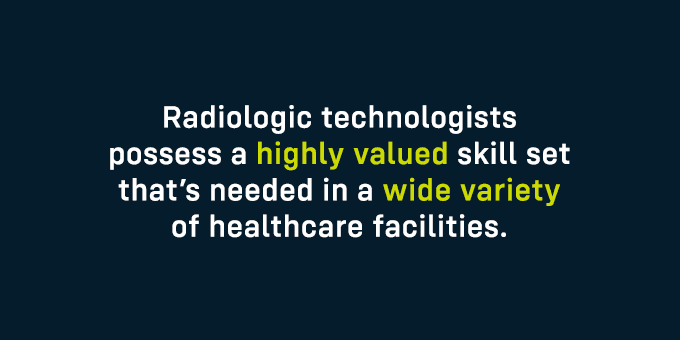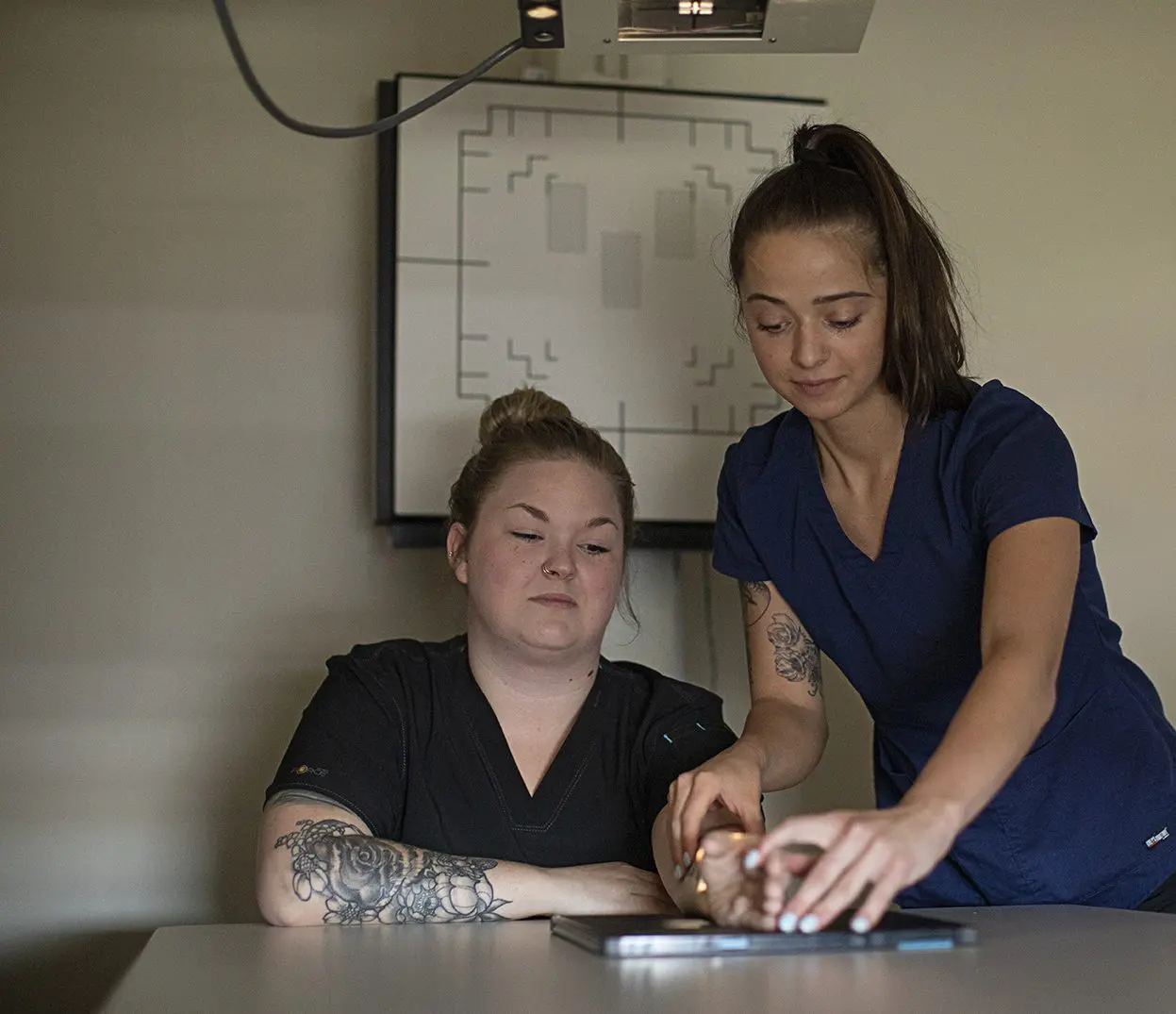How to Become a Radiologic Technologist
A radiologic technologist plays a vital role in helping physicians diagnose and treat patients. If you’re interested in a healthcare career, love working with technology, and have great people skills, this profession could be an excellent fit.
U.S. News & World Report ranks the radiologic technologist profession on its Best Health Care Support Jobs. It also puts the profession on its 100 Best Jobs list and the 25 Best Jobs That Don’t Require a Bachelor’s Degree.
Northwestern Health Sciences University (NWHSU) is dedicated to preparing students for careers in healthcare. In this comprehensive overview, we’ll share what it takes to become a radiologic technologist and provide even more reasons why it could be a great profession for you.
What is a radiologic technologist?
A radiologic technologist (sometimes called an “x-ray tech”) is a healthcare professional who uses sophisticated equipment and technology to perform medical imaging examinations including X-ray (also known as radiography), Computed tomography (CT), Magnetic resonance imaging (MRI), Mammography, Bone densitometry.
The resulting imagery—of tissues, organs, bones, or blood vessels—helps physicians diagnose and treat illnesses and diseases. Note that a radiologic technologist may also acquire additional education and credentials to administer radiation treatment for patients with cancer.
Patient care as a Rad Tech
Along with the high-tech side of this profession is the patient component. A radiologic technologist works one-on-one with patients throughout the examination. Patients may need guidance with positioning their body, verbal direction during procedures, procedure education and additional protection from unnecessary radiation
And as an integral part of a healthcare team, a radiologic technologist’s daily routine may also involve communicating with a variety of other people, including clinicians and other practitioners who order imaging exams, and assist in analyzing and interpreting imaging. Other members of the healthcare team may include nurses and medical assistants who bring patients to the exams, clinic managers and schedulers. You may also need to provide family members with support and exanimation education and expectations.
What kind of education do you need to be a radiologic technologist?
The most common route to becoming a radiologic technologist is to complete an associate degree program. At NWHSU, we offer an Associate of Applied Science (A.A.S.) in Radiologic Technology. There are also bachelor’s degree programs for this profession.
What prior education do you need to enroll in a radiologic technologist program?
A high school diploma or GED is generally the only education you need to enroll in a radiologic technologist program, although programs may require a minimum cumulative GPA.
Note that there may be additional admission steps, such as submitting a personal essay, providing professional references, and passing a criminal background check.
How long do you have to go to school to be a Rad Tech?
Depending on the ultimate degree you earn—an associate or a bachelor’s degree—a radiologic technologist program can vary in length from two to four years.
For instance, to obtain an A.A.S. Degree in Radiologic Technology from NWHSU, you will need to complete a 24-month program, comprising four trimesters of coursework and two trimesters of clinical internships.
Your actual completion time will take longer if you opt to take courses on a part-time basis. Alternatively, the program can take less time if you have credits that transfer.
Get more Rad Tech Info!
What courses do you take to become a radiologic technologist?
Specific course requirements will vary from one program to another. To give you an idea of the coursework required to become a radiologic technologist, the NWHSU’s Radiologic Technology program includes general education courses in anatomy, mathematics, English composition, and communications, in addition to the humanities and the social sciences. Program-specific courses and lab work related to radiologic sciences and procedures, including topics like medical terminology, principles of physics in radiation, and anatomy as it relates to medical imaging practices and clinical internships.
Do you need to be registered to be a radiologic technologist?
Most healthcare employers require radiologic technologists to be registered through The American Registry of Radiologic Technologists® (ARRT).
Also, depending on where you practice, you may need to meet a state’s licensure requirements. According to ARRT, “Some—but not all—states require you to be certified and registered through ARRT before you can obtain a state license.”
Given the time, effort, and expense that goes into completing a radiologic technologist program, it’s a smart move to take the necessary steps to become a registered technologist. Here at NWHSU, we highly encourage it.
See more below on the advantages of registration and of the radiologic technologist career path.
What are the benefits of being a radiologic technologist?
Join a highly valued profession with a promising future
The U.S. Bureau of Labor Statistics estimates a 7% growth rate for the radiologic technologist profession between 2019 and 2029, that’s almost twice the average growth rate for all occupations.
The aging population contributes to this demand. But more generally, radiologic technologists possess a highly valued skill set that’s needed in a wide variety of healthcare facilities.
Seize the opportunity to help people through a career in healthcare
If you’ve wanted to join the healthcare field but had concerns about the time and expense it could take to pursue a bachelor’s degree or an advanced degree, the path to become a radiologic technologist could be a great choice for you.
In approximately two years, you can start your career as a radiologic technologist in a dynamic and growing field. You’ll be on the front lines of healthcare, performing essential medical imaging, working closely with patients, and using your skills, compassion, and professionalism to support them through their health challenges. Plus, you’ll be an essential part of a collaborative healthcare team, making a real difference in people’s lives.
A Rad Tech degree provides ample opportunities for career development
Graduating from a two-year radiologic technology program typically qualifies you to sit for The American Registry of Radiologic Technologists (ARRT) radiography exam. Passing this exam earns you the title of registered radiologic technologist certified in radiography, which is the most common route into the profession. There are other pathways available as well, so be sure to consult ARRT for further details.
This scenario follows ARRT’s “primary eligibility pathway.” If you choose, you can further expand your expertise through “postprimary pathways” and earn additional certifications in specialized medical imaging procedures, including bone densitometry, cardiac interventional radiography, computed tomography (CT), magnetic resonance imaging (MRI), mammography, and vascular interventional radiography.
Importantly, these do not require completing additional programs or acquiring more degrees.
Rather, you’ll need to complete continuing education units (CEUs), often available through online courses, and to demonstrate competency by performing the procedures under supervision in a professional setting.
Acquiring additional certifications makes you a more competitive job candidate, allows you more options to specialize in a particular procedure, and gives you more control over the kind of environment you work in.
Enjoy a profession with a flexible work schedule
As a radiologic technologist, the option to work conventional daytime hours, as well as hours outside of this time allows for a flexible work schedule. That’s good news if you find that working nights or weekends shifts works better for you.
This flexibility can, for example, enable you to more easily obtain additional CEUs to advance your career, pursue another academic degree, and accommodate the needs of your family.
Choose from a variety of work settings
Becuase radiologic technologists are needed in many areas of healthcare, you’ll have more opportunities to find the kind of healthcare facility that suits you.
For example, these are just some of the possible types of places you could work:
- Outpatient imaging centers
- Chiropractic clinics
- Hospitals
- Medical offices and clinics
- ERs
- Trauma centers (within ERs)
Work with cutting-edge medical technology
The technological advances in medical imaging over the past few decades alone have been astounding. As a radiologic technologist, you may be working with cutting-edge technology every day.
You’ll also experience firsthand the exciting ways that the technology will continue to evolve and improve patient care.
The next step: Review radiologic technologist programs and find the best one for you
You’ll want to weigh a number of factors as you consider radiologic technologist programs—and ask lots of questions. Here are five of the most important.
1. How flexible is the program?
Look for a program that can fit well with the various responsibilities you’ll be juggling as a student. You can understand how flexible the program is by asking questions like:
- How often do classes meet?
- Is there an online component?
- How does the program handle the lecture and laboratory portions of its courses?
At NWHSU, for example, courses are typically offered in a hybrid format. That means some lecture and pre-lab activities can be completed online when its best fits into a student’s schedule.
This allows students to learn about practices and procedures through direct instruction, followed immediately by demonstration and hands-on practice. This format is effective for reinforcing learning.
Also, full-time students in the radiologic technology program at NWHSU typically only need to be on campus 2-3 days a week, dependent on the trimester.
2. What is the instructor-to-student ratio?
Find out about your class sizes. Your preparation to become a radiologic technologist should involve an extensive amount of hands-on work. Smaller class sizes will make it much easier to get valuable one-on-one attention as you learn imaging skills and procedures.
3. What kind of equipment does the program provide?
The hands-on component of your radiologic technologist education is critical. Make sure to check out the instrumentation and technology that you’ll have access to for on-campus training.
4. How supportive is the learning environment?
The roles of a radiologic technologist make it a very hands-on profession. You’ll benefit from a program in which you can practice procedures in a comfortable, supportive setting under the supervision of helpful and easily accessible instructors.
To give you an idea of what a program is like, schools may put on multiple admissions events a year for prospective students. If it’s not possible to attend in person, check out the program’s virtual events.
Similarly, to get a feel for the campus and the life of a student, you can schedule a virtual visit.
You may also want to speak with current students to see how accessible and responsive instructors and other faculty are to answer questions and provide extra support to help you succeed.
5. How much will it cost?
A program in radiologic technology should be as transparent as possible as it clearly lays out its fees. As you consider cost, be sure to include all the other expenses that will be involved in attending. For example, how will you get to school? What will the expenses be related to that travel?
Make sure you incorporate financial questions into your search early on. The best place to start is with a school’s financial aid specialists. Be sure to also research both school-sponsored scholarships and external scholarships.
Finally, here’s an important caveat as you research programs: Don’t simply look for the lowest cost. Remember that the value you gain from attending a given program will depend a lot on how well it prepares you to be a successful professional.
The best programs not only deliver subject matter but also help you develop the hands-on skills that are integral to being a radiologic technologist.
